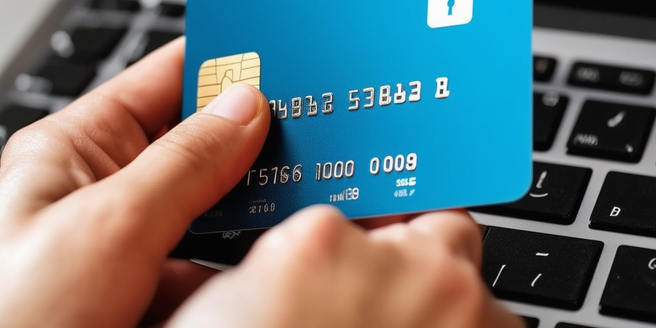
Understanding Secured Credit Cards
Secured credit cards are a vital financial tool for individuals looking to build or rebuild their credit. Unlike traditional unsecured cards, secured cards require a cash deposit as collateral, which typically acts as your credit limit. This setup serves as a safety net for lenders and provides users with an opportunity to demonstrate responsible credit behavior. When you make timely payments, your credit score can gradually improve. It’s crucial to understand the terms and conditions associated with secured cards, including fees, interest rates, and how your activity is reported to credit bureaus. This knowledge helps ensure that you select a card that aligns with your financial goals. By using a secured card wisely, you’re taking the first steps towards establishing a solid credit history, which can open doors to better credit opportunities in the future.
How Secured Cards Help Build Credit
Secured cards offer a practical pathway to improving your credit score, especially if you have a limited or damaged credit history. By consistently making on-time payments and keeping your balance low relative to your credit limit, you can positively impact your credit utilization ratio. This is a significant factor in credit score calculations. Most secured card issuers report your payment history to the major credit bureaus, allowing you to build a positive credit history over time. As you demonstrate responsible use of a secured card, you may become eligible for credit limit increases or be able to transition to an unsecured card with better terms. This incremental process of credit building requires patience and financial discipline, but it ultimately provides users with the foundation for a stronger credit profile, essential for future financial endeavors.
Choosing the Right Secured Card
When selecting a secured card, it’s important to consider several key factors to ensure it meets your financial needs. Start by comparing annual fees, as these can vary significantly between cards. Some secured cards offer lower fees or even waive them if certain conditions are met. Look for a card with a reasonable minimum deposit requirement, allowing you to comfortably secure the necessary collateral without straining your budget. Additionally, check whether the card offers a path to upgrade to an unsecured card in the future. Pay attention to interest rates and any rewards programs that may be available. While the main goal is building credit, these features can enhance your financial experience. Lastly, verify that the card issuer reports to all three major credit bureaus, as this is crucial for building a comprehensive credit profile.
Steps to Apply for a Secured Card
Applying for a secured credit card is a straightforward process, but preparation is key to avoid setbacks. Begin by researching and selecting a card that aligns with your financial goals and offers favorable terms. Once chosen, gather the necessary documentation, such as identification, proof of income, and financial account information. Most applications can be completed online, requiring you to fill out personal and financial details. Be prepared to make the security deposit, which typically ranges from a few hundred to several thousand dollars, depending on your credit limit preference. Follow the application instructions carefully to ensure all information is accurate and complete. After submitting your application, the approval timeline can vary, with some issuers providing instant decisions, while others might take longer to review. Upon approval, you’ll receive your card, and your journey to rebuilding credit begins.
Tips for Maximizing Secured Card Benefits
To maximize the benefits of a secured credit card, adopt strategies that not only improve your credit score but also enhance your financial management skills. Start by setting up automatic payments or reminders to ensure that you never miss a due date, which is crucial for building a positive payment history. Keep your credit utilization ratio low by paying off your balance in full each month or using only a small portion of your credit limit. Regularly monitor your account activity and statements to identify any errors or unauthorized transactions. Take advantage of any educational resources your card issuer may offer to help you understand credit management better. Additionally, avoid applying for multiple credit cards simultaneously, as this can negatively impact your score. By staying disciplined and informed, you can effectively use a secured card as a stepping stone to financial success.
Monitoring Your Credit Score Progress
Regularly monitoring your credit score progress is an essential aspect of using a secured card to build credit. Many card issuers provide free access to your credit score or credit monitoring services, which can alert you to changes in your credit report. This transparency allows you to track improvements over time and motivates you to maintain positive financial habits. It’s recommended to review your credit reports annually from the three major bureaus to ensure accuracy and identify any discrepancies. Staying informed about your credit standing helps you detect any fraudulent activity early and address it promptly. Additionally, understanding the components that affect your score, such as payment history, credit utilization, and length of credit history, empowers you to make informed decisions that contribute to your credit health. Consistent monitoring and proactive management pave the way for a stronger financial future.
